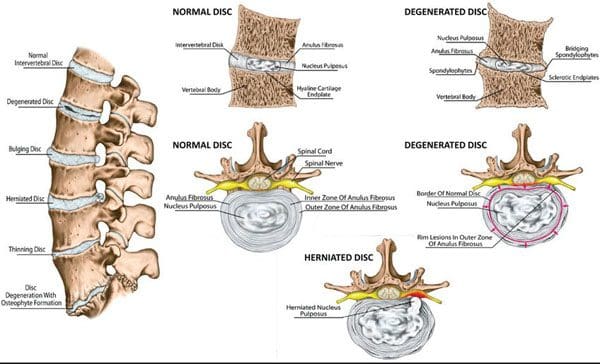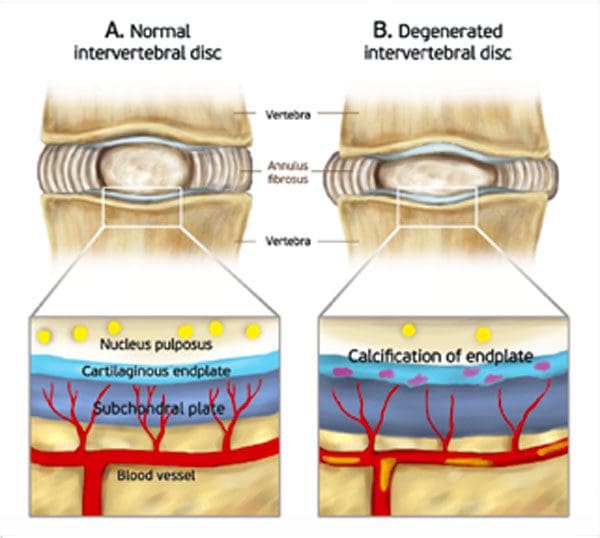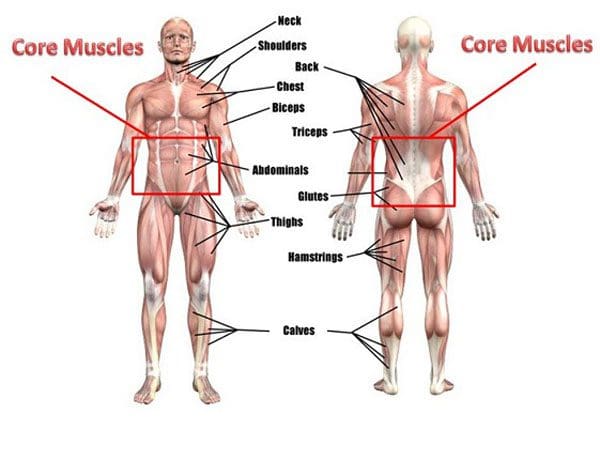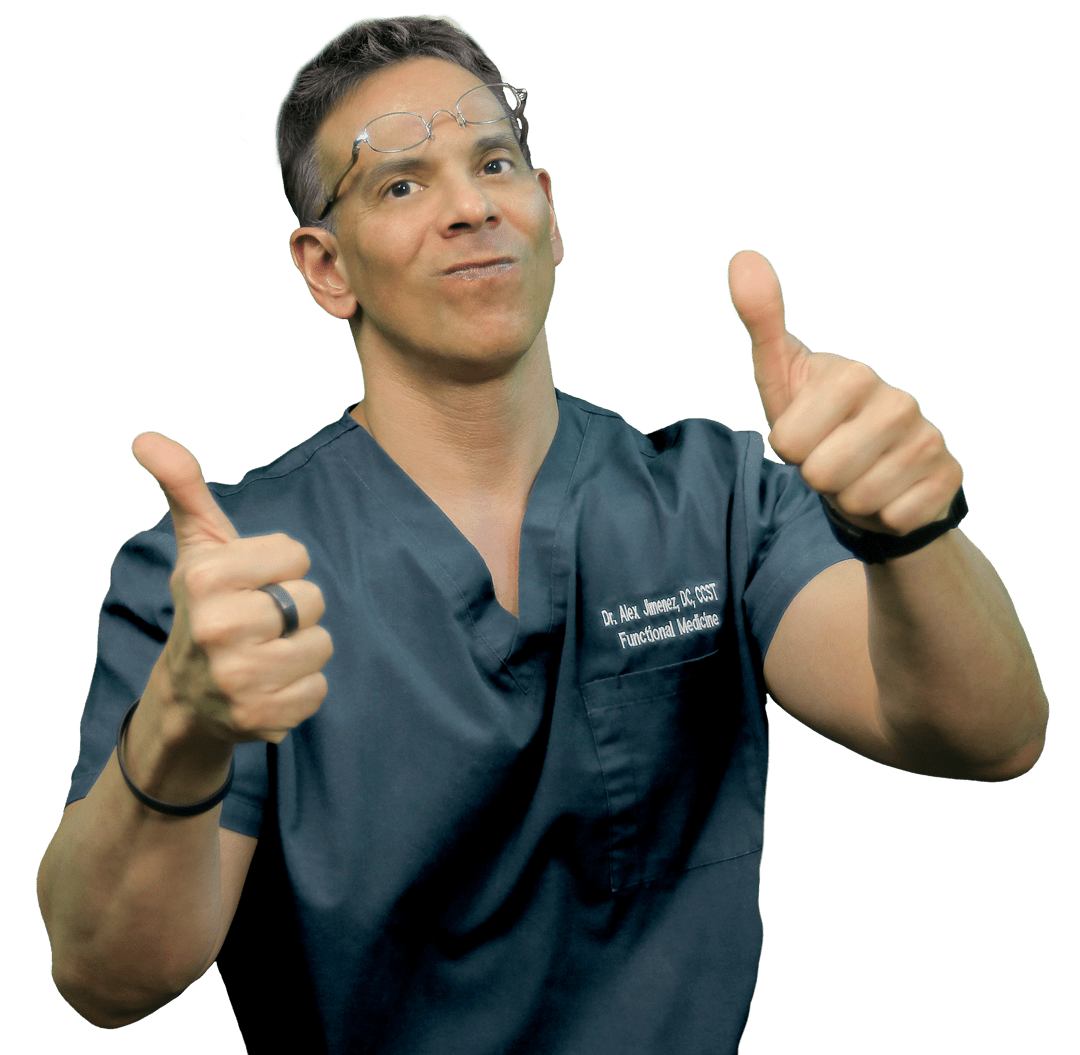Chiropractic Prevention and Relief For Degenerative Disc Disease

Causes and Risk Factors
The most common cause of disc degeneration is aging. With age comes the loss of fluids/water. This means the discs get thinner and provide less protection. The shock absorbers don’t absorb weight, impact, pressure like they used to. However, disc degeneration does not always occur later in life. Genetics can be a catalyst for development when young.Individual environment vs. genetics
- Stresses
- Strains
- Wear
- Tear
- Discs dry out
- Rings crack or tear

Chiropractic Prevention and Preserving The Discs
Individuals need training on proper body posture and body mechanics. A major contributing factor that increases the risk of nerve, spine/back pain due to disc damage. The back/spine should be moved like a crane. This means not bending over at the waist, but squatting down with the hips and knees when lifting an object. Not everything can be done this way, but if an individual can eliminate too much bending at the waist, it will definitely help. Do not neglect the core muscles. Core exercises will maintain the muscles around the waist, which also strengthens the rest of the body. All the muscles front, back, around the trunk, hips, and knees to the chest are all the core muscles.
Healthy Weight Less Spinal Stress
Beyond physical stressors, another important factor in preventing degenerative disc disease is maintaining a proper weight. Society has adapted more and more to a sedentary lifestyle. And home quarantine means being more sedentary. Emotional factors like:- Boredom
- Anxiety
- Depression
- Fatigue

Lifestyle Adjustments Health Coaching
Implementing a preventive lifestyle to prevent degenerative damage is challenging. Everyone really should try to live as healthy a lifestyle they can.Education and training
Continual education on slowing disc degeneration is essential. This is what chiropractic prevention focuses on. Then an individual can begin implementing various tools for avoiding weight gain and learn proper posture and lifting.Quitting smoking
Smoking accelerates the aging process by drying out the tissue, especially the spinal discs. It is known as desiccation and is why smoking is a major risk factor for degenerative disc disease.Disc stress
Anything that stresses the discs for any amount of time can generate pain. For example, standing too long even carefully standing straight can induce discomfort and pain. Sitting can help, but caution needs to be observed. Sitting too long places more pressure on the low back than when standing. There must be a balance between sitting and standing. Experts suggest getting up and moving every 20 to 30 minutes. This is a perfect time to get up and do in-home walking exercises, physical chores, anything that gets the body up and moving around.Stretching
Regular bending and stretching need to become a natural reflex. When the body begins to feel sore, stretch out the area.
Bodily Composition
Human Immune System
The immune system is highly complex and essential in maintaining optimal health. The main function of this system is to neutralize pathogenic microorganisms like bacteria that get into the body and affect the body’s homeostasis, eliminate any harmful substances from the environment, and fight the body’s own cells that can cause illnesses like cancer. The defense system consists of innate and adaptive immune processes. The innate system includes exterior defenses like the: Any organisms that get past the first line of defense, have to face the adaptive system, which is made up of T and B cells. The adaptive immune system is a learning defense that constantly adapts and evolves to be able to identify changes in pathogens that mutate over time. Together, these systems provide a fortified resistance to any long-term survival of infectious agents in the body. Healthy lifestyle adjustments can help strengthen and boost these systems working to keep the body safe.Dr. Alex Jimenez’s Blog Post Disclaimer
The scope of our information is limited to chiropractic, musculoskeletal, physical medicines, wellness, and sensitive health issues and/or functional medicine articles, topics, and discussions. We use functional health & wellness protocols to treat and support care for injuries or disorders of the musculoskeletal system. Our posts, topics, subjects, and insights cover clinical matters, issues, and topics that relate and support directly or indirectly our clinical scope of practice.* Our office has made a reasonable attempt to provide supportive citations and has identified the relevant research study or studies supporting our posts. We also make copies of supporting research studies available to the board and or the public upon request. We understand that we cover matters that require an additional explanation as to how it may assist in a particular care plan or treatment protocol; therefore, to further discuss the subject matter above, please feel free to ask Dr. Alex Jimenez or contact us at 915-850-0900. The provider(s) Licensed in Texas& New Mexico*References
Mayo Clinic. (May 11, 2020.) “Packing on pounds during COVID-19 and how to turn it around.â€Â newsnetwork.mayoclinic.org/discussion/packing-on-pounds-during-covid-19-and-how-to-turn-it-around/Post Disclaimers
Professional Scope of Practice *
The information herein on "Chiropractic Prevention and Relief For Degenerative Disc Disease" is not intended to replace a one-on-one relationship with a qualified health care professional or licensed physician and is not medical advice. We encourage you to make healthcare decisions based on your research and partnership with a qualified healthcare professional.
Blog Information & Scope Discussions
Our information scope is limited to Chiropractic, musculoskeletal, physical medicines, wellness, contributing etiological viscerosomatic disturbances within clinical presentations, associated somatovisceral reflex clinical dynamics, subluxation complexes, sensitive health issues, and/or functional medicine articles, topics, and discussions.
We provide and present clinical collaboration with specialists from various disciplines. Each specialist is governed by their professional scope of practice and their jurisdiction of licensure. We use functional health & wellness protocols to treat and support care for the injuries or disorders of the musculoskeletal system.
Our videos, posts, topics, subjects, and insights cover clinical matters, issues, and topics that relate to and directly or indirectly support our clinical scope of practice.*
Our office has reasonably attempted to provide supportive citations and has identified the relevant research study or studies supporting our posts. We provide copies of supporting research studies available to regulatory boards and the public upon request.
We understand that we cover matters that require an additional explanation of how it may assist in a particular care plan or treatment protocol; therefore, to further discuss the subject matter above, please feel free to ask Dr. Alex Jimenez, DC, or contact us at 915-850-0900.
We are here to help you and your family.
Blessings
Dr. Alex Jimenez DC, MSACP, RN*, CCST, IFMCP*, CIFM*, ATN*
email: coach@elpasofunctionalmedicine.com
Licensed as a Doctor of Chiropractic (DC) in Texas & New Mexico*
Texas DC License # TX5807, New Mexico DC License # NM-DC2182
Licensed as a Registered Nurse (RN*) in Florida
Florida License RN License # RN9617241 (Control No. 3558029)
Compact Status: Multi-State License: Authorized to Practice in 40 States*
Presently Matriculated: ICHS: MSN* FNP (Family Nurse Practitioner Program)
Dr. Alex Jimenez DC, MSACP, RN* CIFM*, IFMCP*, ATN*, CCST
My Digital Business Card






 Again, I Welcome You.
Again, I Welcome You.
Comments are closed.